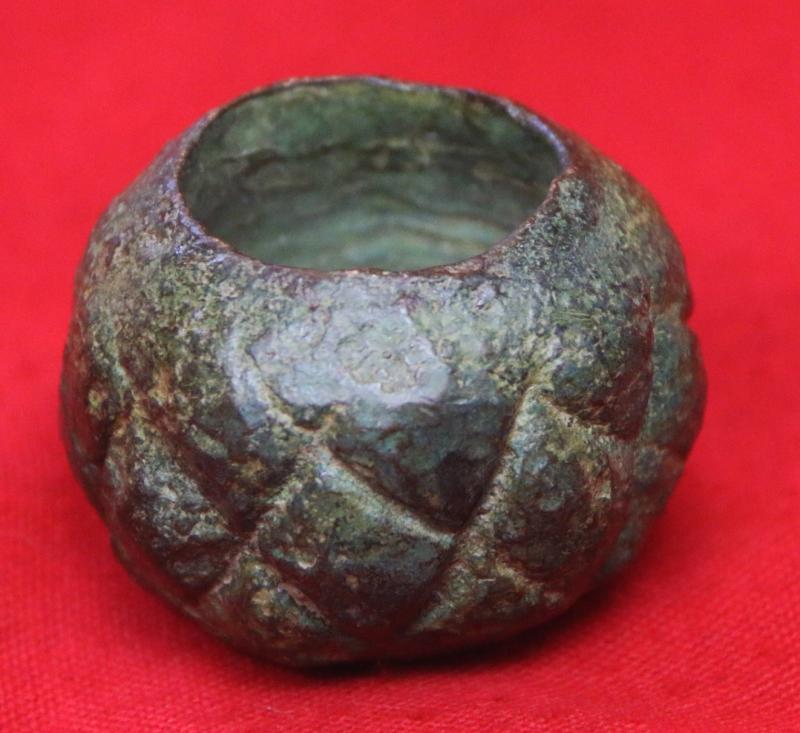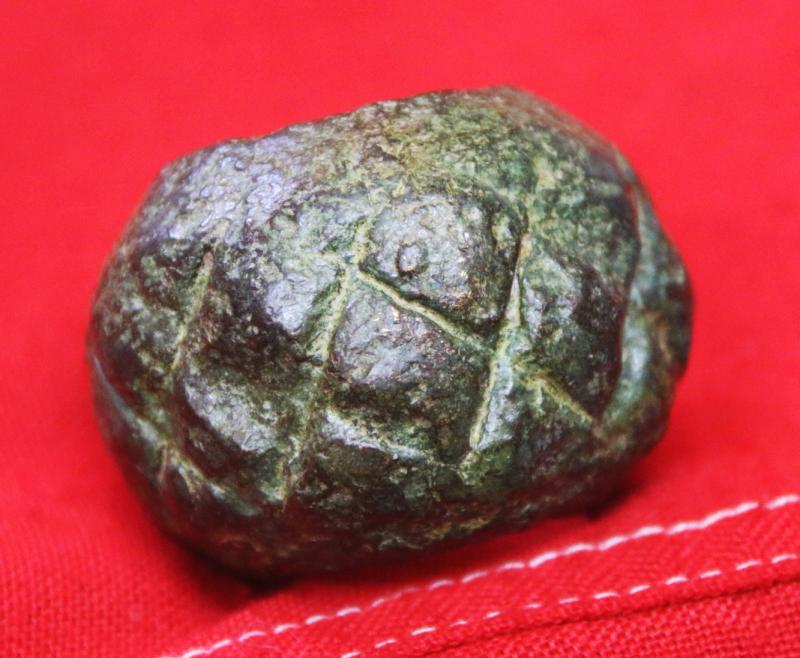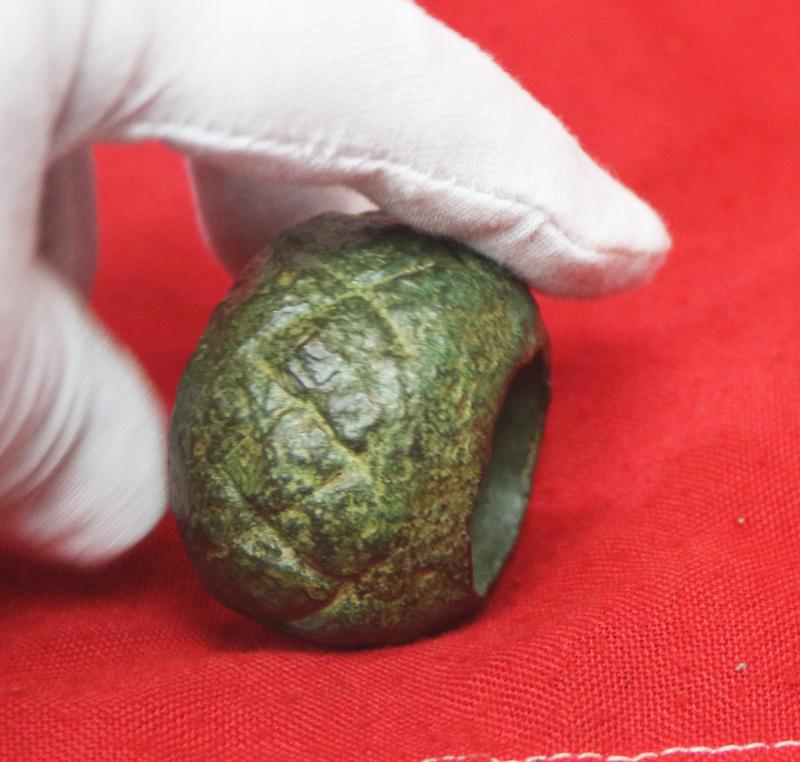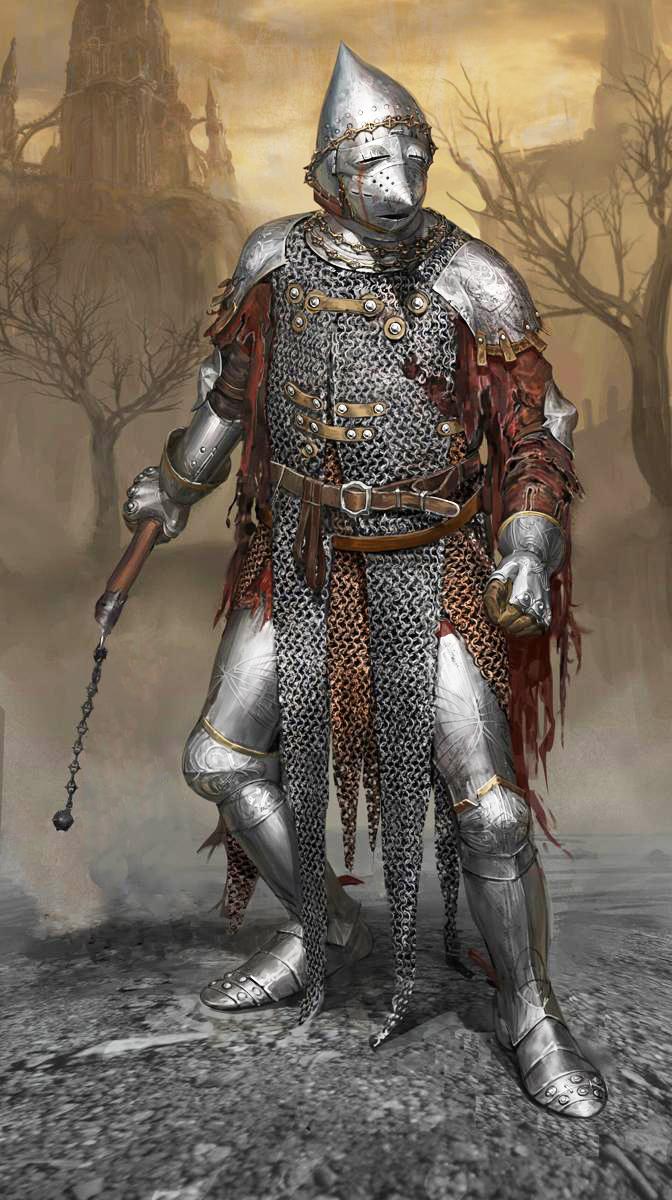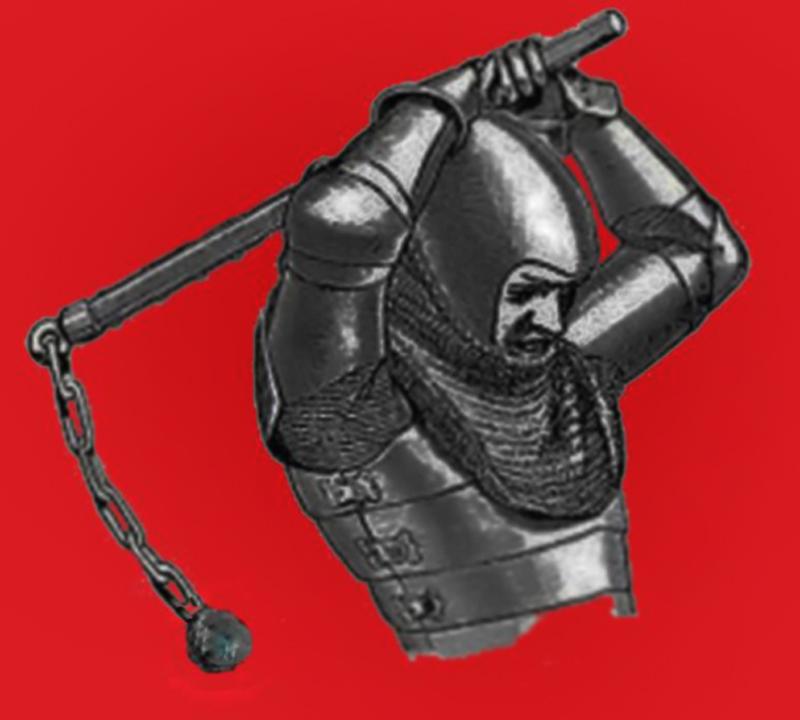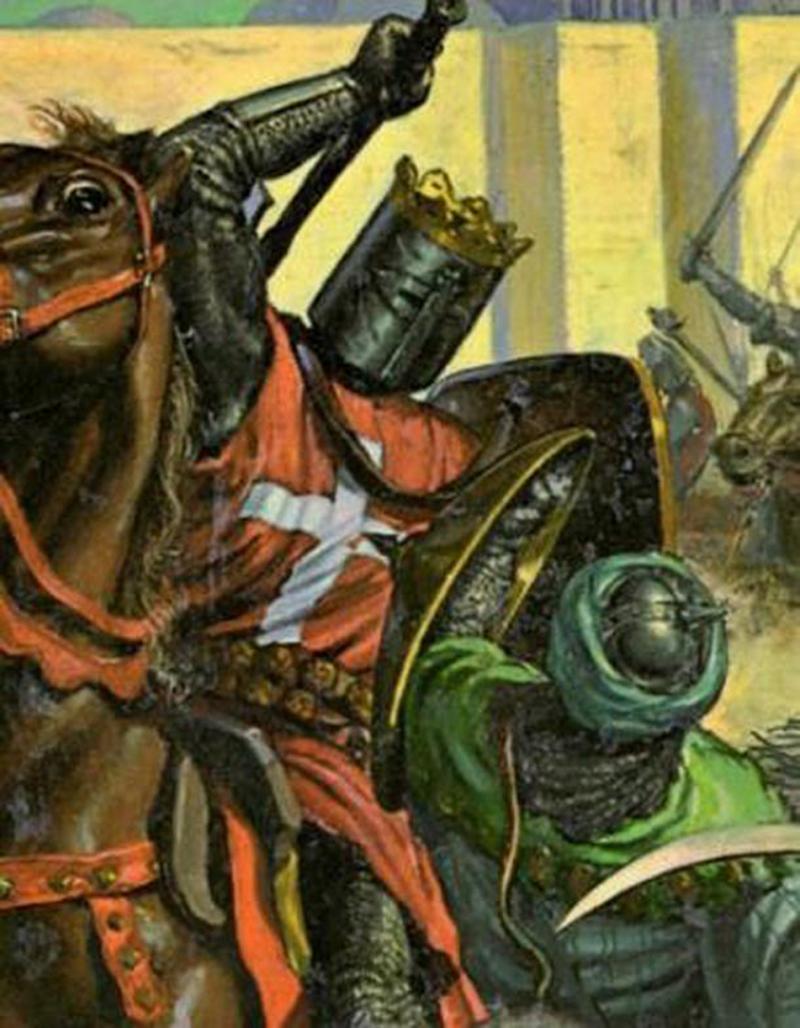A Very Good & Fine Original Medieval 'Crusader' Knight's Bronze Battle Mace & Scorpion Flail Mace Head Circa 12th Century. Around 900 Years Old, In Superb Condition and With Excellent Natural Age Patination
Made of Bronze Copper Alloy. A weapon made at the time at great cost, and only for the most affluent knight, a battle mace for the crushing and smashing of armour. The mace head is approx. the width of a pool or billiard ball. This fabulous mace could be mounted upon a haft {pretty much none of the original hafts from that period are now still in existence, being organic they decay very quickly once buried} or the aperture filled with lead and a large hand wrought iron staple, that would then be chained, and further mounted upon a short wooden haft to use as a flail mace.
Although no original early mace heads, in reality, were that large, they were heavy and powerful enough, combined with the impetus of a powerful swing, to be incredibly and dramatically effective at smashing through armour, and even iron plate helmets.
This bronze mace was made and used in the era of the first, through to all the knightly crusades to the Holy Land to reclaim Jerusalem.
The Crusades were a series of religious wars initiated, supported, and sometimes directed by the Christian Latin Church in the medieval period. The best known of these military expeditions are those to the Holy Land in the period between 1095 and 1291 that had the objective of reconquering Jerusalem and its surrounding area from Muslim rule after the region had been conquered by the Rashidun Caliphate centuries earlier. Beginning with the First Crusade, which resulted in the conquest of Jerusalem in 1099, dozens of military campaigns were organised, providing a focal point of European history for centuries. Crusading declined rapidly after the 15th century.
In 1095, after a Byzantine request for aid, Pope Urban II proclaimed the first expedition at the Council of Clermont. He encouraged military support for Byzantine emperor Alexios I Komnenos and called for an armed pilgrimage to Jerusalem. Across all social strata in Western Europe, there was an enthusiastic response. Participants came from all over Europe and had a variety of motivations. These included religious salvation, satisfying feudal obligations, opportunities for renown, and economic or political advantage. Later expeditions were conducted by generally more organised armies, sometimes led by a king. All were granted papal indulgences. Initial successes established four Crusader states: the County of Edessa; the Principality of Antioch; the Kingdom of Jerusalem; and the County of Tripoli. A European presence remained in the region in some form until the fall of Acre in 1291. After this, no further large military campaigns were organised.
Code: 25454
1250.00 GBP


